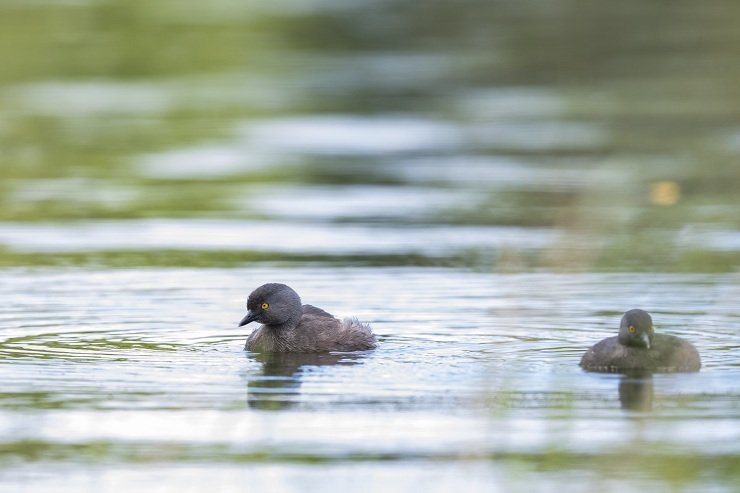
Set in an abandoned oil refinery where wildlife is slowly regaining control save for the desperate attempts of golfers to retain all eighteen holes, industrial ghosts loom over rolling freshwater lakes bordered by fifty foot tall trees. Fortunately, throughout the tenure of the refinery many of the older, larger trees were preserved. This was actually the place where the late Richard ffrench spent much of his time as a music teacher, amassing countless observations of birds that would later form the basis of one of the essential birding guides for Trinidad and Tobago.
On this particular morning, I wasn’t on any specific mission other than to renew my membership to a local non-profit stationed there. I figured that I’d just get there a little earlier and find a comfortable spot somewhere and enjoy the morning and whatever came with it.
Once I gained entry into the compound and rounded my first corner, the unmistakable call of a Striped Cuckoo echoed among the shrubs and empty pipelines, warmly lit by the rising sun. Black Vultures lounged on thick branches, some already blissfully basking with wings spread wide.
Alone on the roadway, I slowed to a crawl as I scoured the branches – we’ve had sporadic sightings of a lone Black Kite there hidden among the throngs of Black Vultures – but no luck this time.
Noisy Yellow-crowned Parrots indicated that it was time to stop the car and get out. These large parrots are popular in the pet trade, and that’s a likely source of the population of this species on Trinidad.

As I neared the shore, I spooked a hunting Striated Heron who in turn spooked a Neotropic Cormorant hunting the shallow water. These piscivores are extremely commonplace at these ponds, and many of them were quite accommodating during my two hour long stint here. About one hundred yards away an Anhinga surfaced with a freshly skewered fish. The wok of an alarmed Black-crowned Night-Heron and the thin whistle of a Yellow-breasted Flycatcher made me stop and realize it was definitely lining up to be a rather birdy morning.
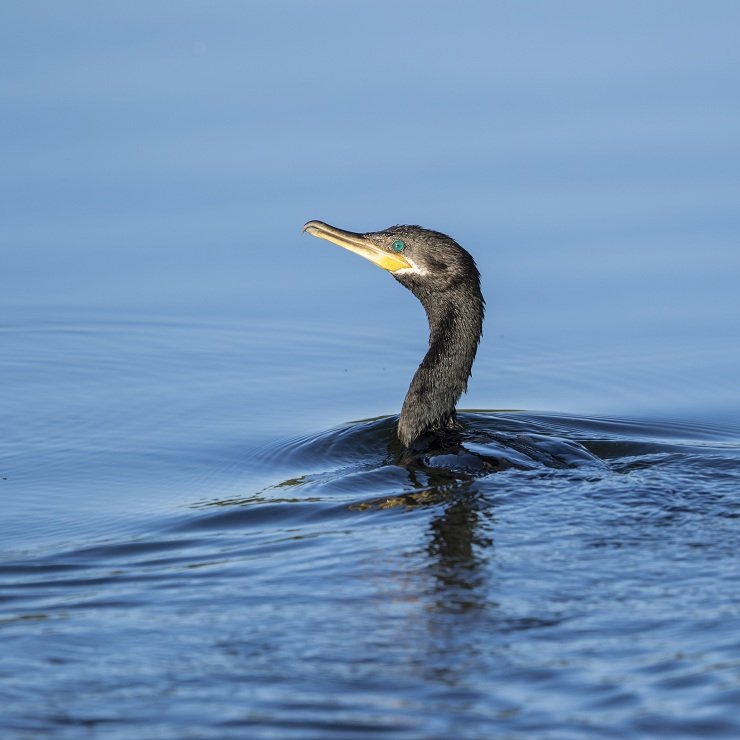
The subtle white edging to the gape of this bird indicates it is near breeding time.
I figured I’d just slip into position with my camera and grab a few shots, maybe take a video for my Instagram story and contemplate life a little. But I quickly realized this was no slow morning. Something was consistently happening, somewhere around me.
Across the pond, a strange movement in the water turned out to be an Osprey. I watched this bird fly low over the water time and time again, washing its talons in the cool fresh water. But occasionally, it’d land in the water and splash around a bit before returning to the air.
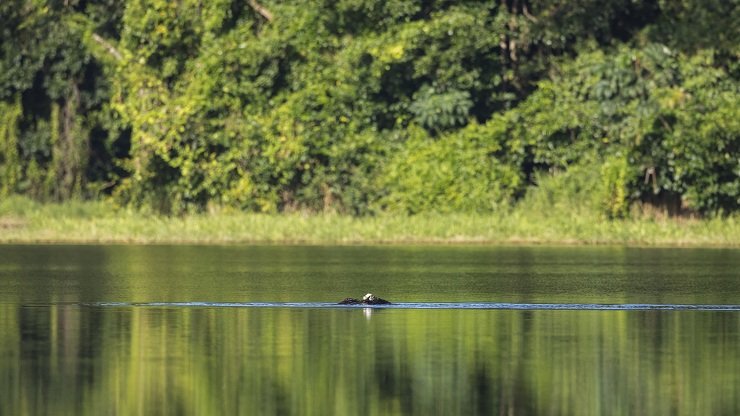
Behind me, a pair of Barred Antshrikes called to each other as they traversed their territory together. A Rufous-browed Peppershrike sang its sweet song repeatedly from seemingly just over my head. I cast a glance once, but these relatives of vireos are far more often heard than seen. Needless to say it wasn’t too difficult to direct my attention to an unobstructed view of an immature Striated Heron.
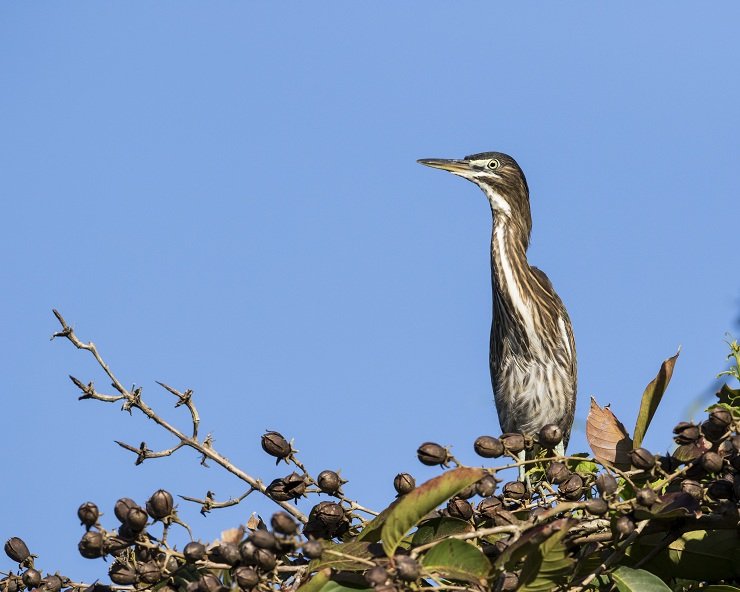
I did contort myself a bit to follow this Masked Cardinal, however. Oddly enough they are more closely related to tanagers than to cardinals.
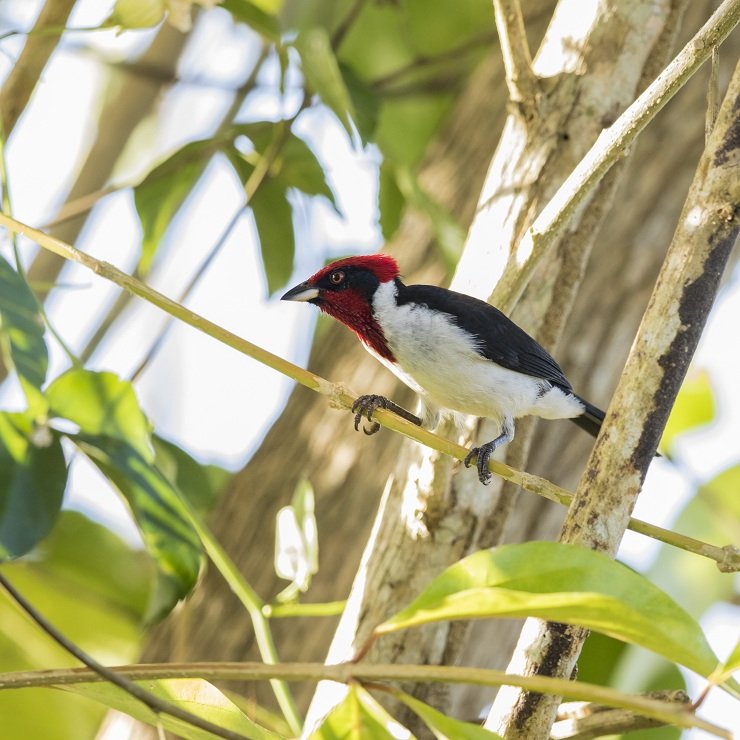
By this time, the sun was comfortably in the sky and the tropical air was already heating up considerably. For the most part, vultures occupied the sky. Except for a smaller, distinctive shape. I had never seen a Peregrine Falcon soaring with Black Vultures before – interestingly enough I would later see the very same occurrence two days later on another part of the island.
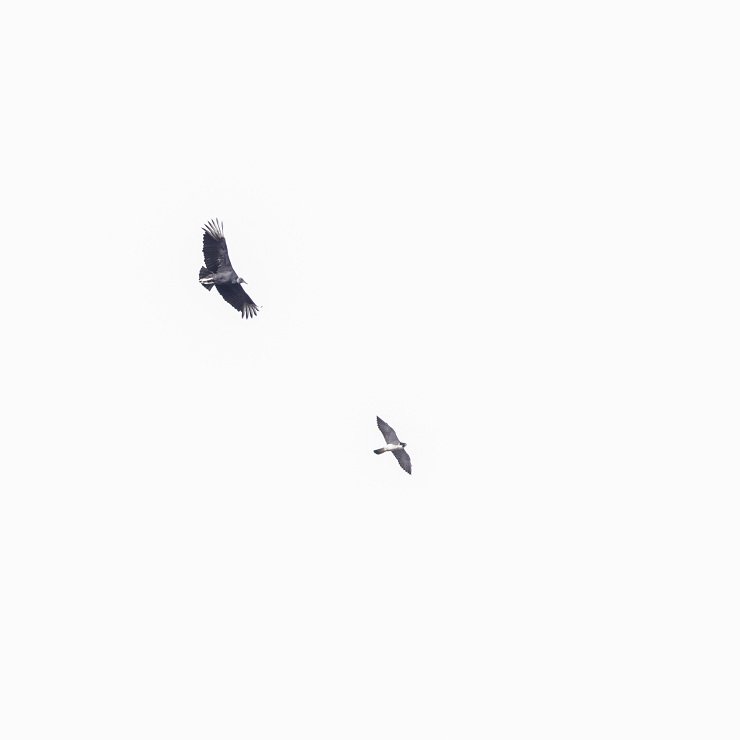
The warm air brought with it more raptors, a pair of Zone-tailed Hawks sailed together just over a distant treeline. Mimicking the action of soaring vultures, these medium-sized raptors usually associate with large flocks of the scavengers. Picking them out from the crowd has been one of my hobbies for many years. Somewhere in the distance, the faint call of a Grey-headed Kite echoed, marking the second species I recorded for the morning that I never previously had at that location (the first was Striped Cuckoo).
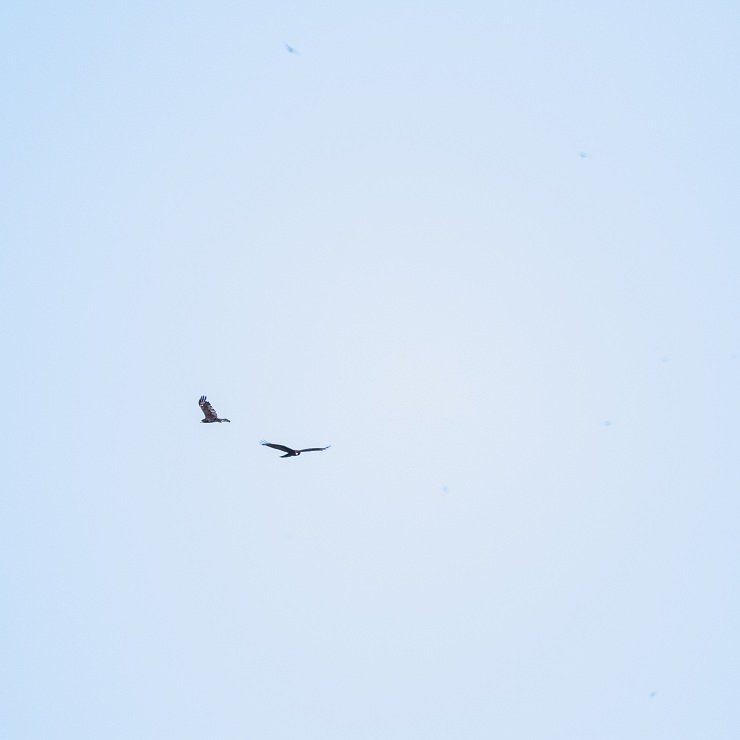
The primary reason for my choice of location to sit and wait was a couple sightings I had within the last month or so of a trio of Pied-billed Grebes. These scarce residents are rarely seen – and even when visible, are usually quite wary of humans. On this particular morning though, I was only being misled by multiple appearances of Least Grebes from distance. I’d excitedly raise my binoculars to only barely make out that bright yellow eye that screamed ‘Least Grebe’ uncomfortably loud. Finally, a faraway movement caught my eye. A lighter coloured bird floated in some shade, casually preening. And it was headed my way.
Now, I found myself in a predicament. I stared at my camera bag a short distance away up the bank. In it was my teleconverter to get me some extra focal length in case the bird decided to keep its distance. Getting to it however entailed the risk of spooking my subject, ruining my chances of any kind of usable photo. I eventually decided to stay in place, hunkered down behind some dry grasses. Gradually, the bird drifted nearer. The only time I had ever been closer to this species was when I didn’t have my camera with me (and saw an adult pass a fish over to a juvenile!) so I was rather thankful even though it made an about turn once it drifted close enough to feel my overbearing human presence.
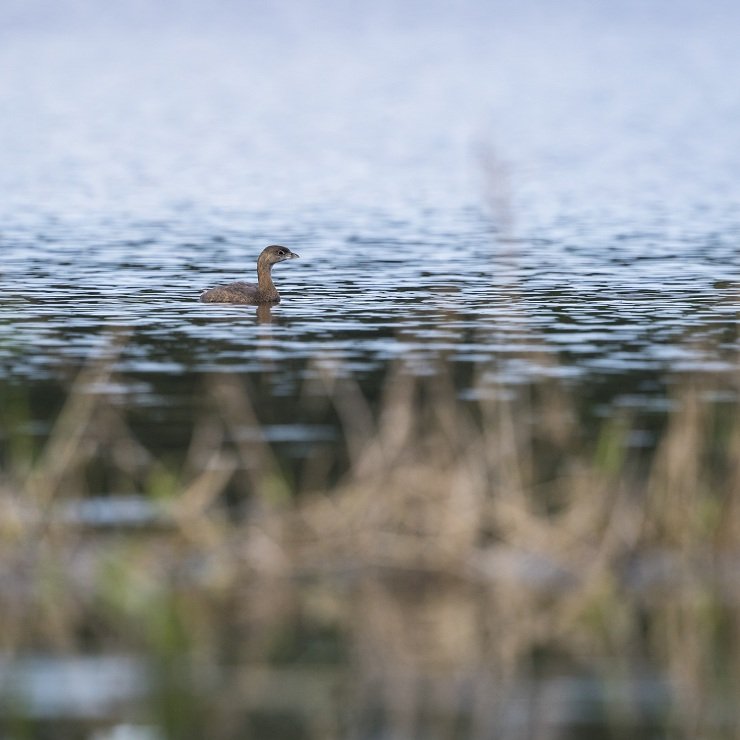
Emboldened and satiated by my encounter with the Pied-billed Grebe, I decided to call it a morning. Not before I managed to get a visual – albeit an extremely distant one – of the Grey-headed Kite.
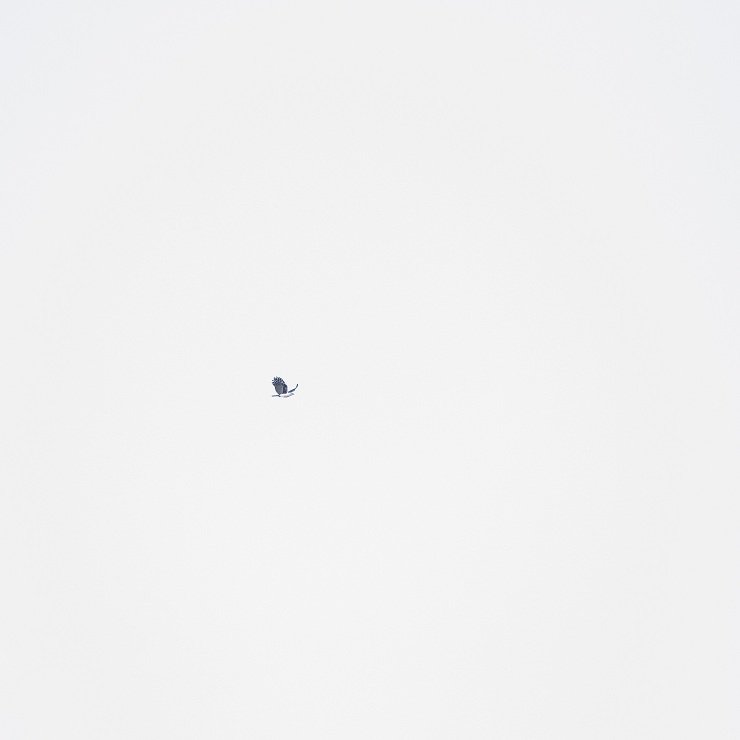
Following is the list of birds I recorded in the couple hours sitting lakeside (in taxonomic order). I can hardly imagine the tally had I been actively birding from sunrise. The refinery may have fallen silent in terms of the whirring of machinery and venting of gas, but I can assure you it’s actually gotten louder – but in a different language.
- Least Grebe
- Pied-billed Grebe
- Pale-vented Pigeon
- Ruddy Ground Dove
- Smooth-billed Ani
- Wattled Jacana
- Magnificent Frigatebird
- Neotropic Cormorant
- Anhinga
- Black-crowned Night Heron
- Striated Heron
- Great Egret
- Little Blue Heron
- Black Vulture
- Osprey
- Grey-headed Kite
- Common Black Hawk
- Zone-tailed Hawk
- Ferruginous Pygmy-Owl
- Ringed Kingfisher
- Green Kingfisher
- Yellow-headed Caracara
- Peregrine Falcon
- Yellow-crowned Parrot
- Green-rumped Parrotlet
- Barred Antshrike
- Streak-headed Woodcreeper
- Yellow-chinned Spinetail
- Yellow-bellied Elaenia
- Southern Beardless Tyrannulet
- Pied Water Tyrant
- Great Kiskadee
- Boat-billed Flycatcher
- Tropical Kingbird
- Black-tailed Tityra
- Rufous-browed Peppershrike
- Southern Rough-winged Swallow
- White-winged Swallow
- House Wren
- Spectacled Thrush
- Tropical Mockingbird
- Masked Cardinal
- Blue-grey Tanager
- Palm Tanager
- Saffron Finch
- Greyish Saltator
- Blue-black Grassquit
- Bananaquit
- Crested Oropendola
- Yellow Oriole
- Giant Cowbird
- Shiny Cowbird
- Carib Grackle

This pair of Least Grebes put on a show just before I left, they are a considerably more confiding species than their larger cousins – at least within Trinidad.













Leave a Comment